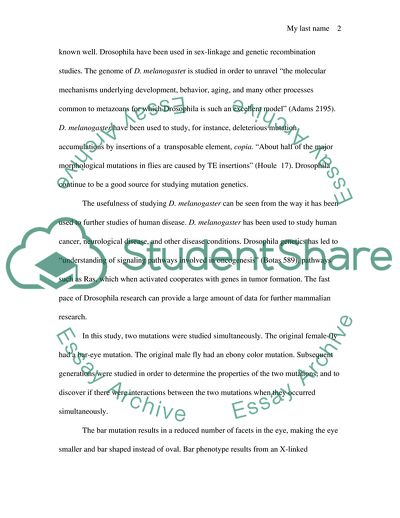Cite this document
(Drosophila Melanogaster Genetics Lab Report Example | Topics and Well Written Essays - 2000 words, n.d.)
Drosophila Melanogaster Genetics Lab Report Example | Topics and Well Written Essays - 2000 words. Retrieved from https://studentshare.org/biology/1721605-genetics-drosophila-melanogaster-study
Drosophila Melanogaster Genetics Lab Report Example | Topics and Well Written Essays - 2000 words. Retrieved from https://studentshare.org/biology/1721605-genetics-drosophila-melanogaster-study
(Drosophila Melanogaster Genetics Lab Report Example | Topics and Well Written Essays - 2000 Words)
Drosophila Melanogaster Genetics Lab Report Example | Topics and Well Written Essays - 2000 Words. https://studentshare.org/biology/1721605-genetics-drosophila-melanogaster-study.
Drosophila Melanogaster Genetics Lab Report Example | Topics and Well Written Essays - 2000 Words. https://studentshare.org/biology/1721605-genetics-drosophila-melanogaster-study.
“Drosophila Melanogaster Genetics Lab Report Example | Topics and Well Written Essays - 2000 Words”. https://studentshare.org/biology/1721605-genetics-drosophila-melanogaster-study.


